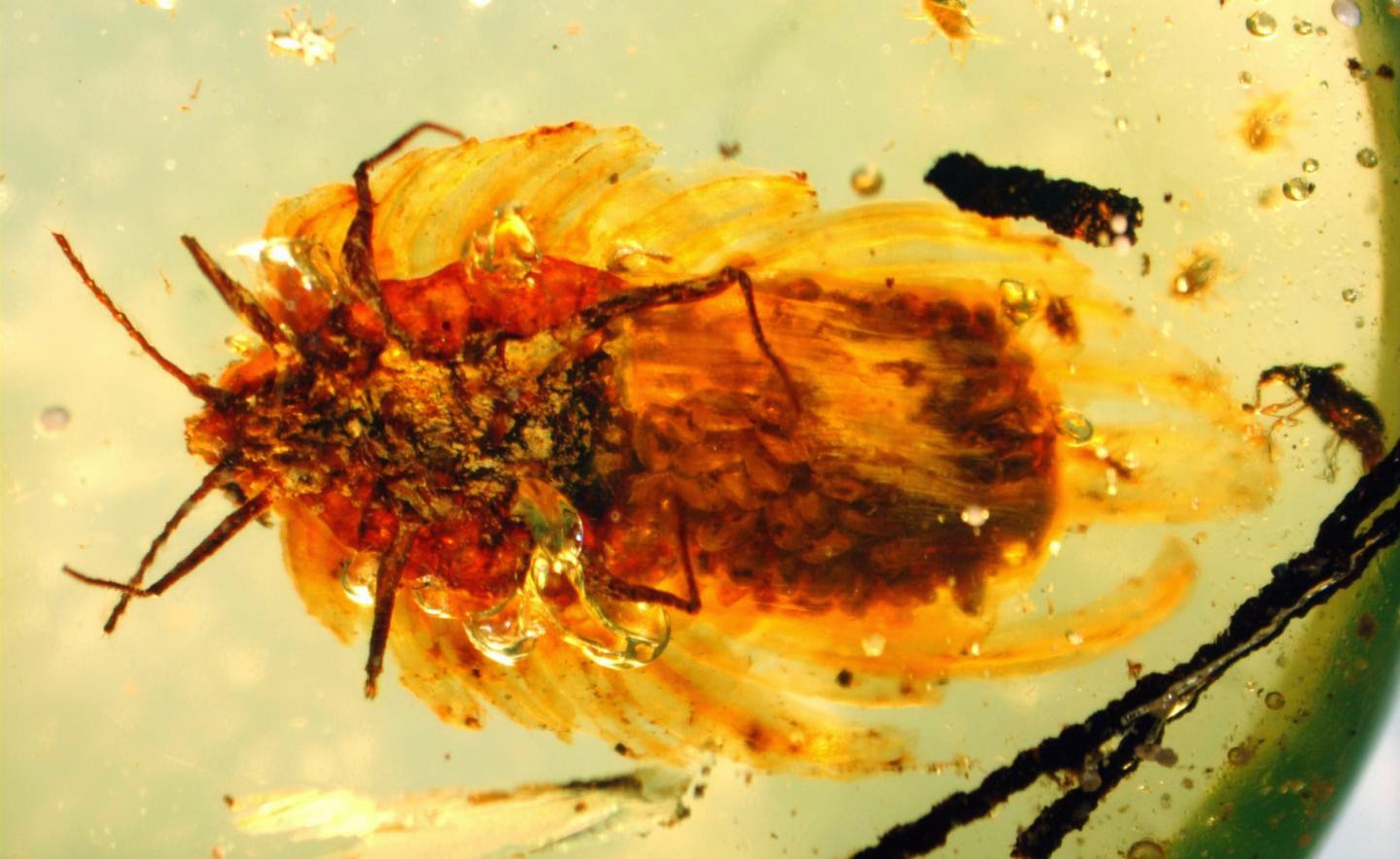
Scientists at the University of Bonn, together with colleagues from China, UK and Poland, have described the oldest evidence of brood care in insects: it is in a female scale insect with her young that is encased in amber as a fossil. The approximately100-million-year-old “snapshot” from the Earth’s history shows the six millimetre long tiny insect with a wax cocoon, which protected the eggs from predators and drying out plus associated young nymphs. The researchers are now presenting their results in the respected journal eLIFE.
The small female insect with the waxy cocoon or reticulum is clearly visible in the brownish translucent amber. The wax cover protected both the scale insect and her approximately 60 eggs from predators and from drying out. In contrast to male scale insects, the female has no wings and is specialized to suck on leaves and provide for her offspring.
“Fossils of fragile female scale insects are extremely rare”, says Chinese paleontologist Dr. Bo Wang, who as a fellow at the Alexander von Humboldt Foundation researching at the Steinmann Institute of the University of Bonn. “What is unique here is the age of the discovery: 100-million-year-old evidence of brood care among insects has not been found until now.” The age of the site of the discovery was determined using the radiometric uranium-lead dating method. In addition to the insect, its eggs and the waxy cover, six young insects are also preserved in this “snapshot” of the Earth’s history captured in amber.
The fossil is named after a Buddhist goddess
Dr. Wang used his good contact with collectors in northern Myanmar to find this extraordinarily rare amber inclusion. The international team of scientists gave the 100-million-year-old scale insect the name “Wathondara kotejai” – after the Buddhist earth goddess Wathondara and the Polish entomologist Jan Koteja.
That the female scale insect was preserved in amber was a very rare occurrence, explains Associate Professor and co-author Dr. Torsten Wappler of the Steinmann Institute at the University of Bonn. Usually, it is the male scale insects that are encased by the resin when they stop on the trunks or branches of trees. In this case, resin probably dripped from a branch onto a leaf which enclosed the female scale insect with her cocoon, eggs and nymphs.
Then the resin fossilized. The scientists cut and polish the amber until only a thin layer remained over the enclosed insect. Like looking through a window, the researchers were then able to take three-dimensional, high-resolution photographs of this witness of the past under the microscope.
Brood care increases the survival chances of the offspring
“With brood care, the scale insect increases the survival chances of its offspring”, says Dr. Wappler. Once the young scale insect is far enough along in its development, it slips out of the protective wax coating and looks for a new plant where to suck its high-sugar and high-energy sap. Even today, common scale insects have a wax cocoon. Their wax gland is found on the hind end. While turning in circles, they discharge the secretion. The result is a round structure with grooves. “The wax case then looks sort of like a record album from the top”, says the paleontologist with a grin. If the animal grows, it moults and discharges wax again. Skin and wax layers therefore alternate in the cocoon.
Amber as a window to the past
From comparing modern scale insects with the amber discovery, the paleontologists concludes that the lifestyle and reproductive behaviour of these insects around 100 million years ago was already quite similar to the current forms. “Inclusions in amber are a unique opportunity to look at life in the past”, explains Dr. Wappler. Insects in fossilized resin are usually very well preserved, whereas articulated animals embedded in sediment either do not remain intact at all or are often crushed or crimped by the pressure of the weight of the overlying layers. “That is why the amber discovery of Wathondara kotejai is unique”, the scientists at the University of Bonn are convinced.
Reference:
Publication: Brood Care in a 100-million-year-old scale insect, Journal eLIFE; DOI: 10.7554/eLife.05447.001
Note : The above story is based on materials provided by University of Bonn.










